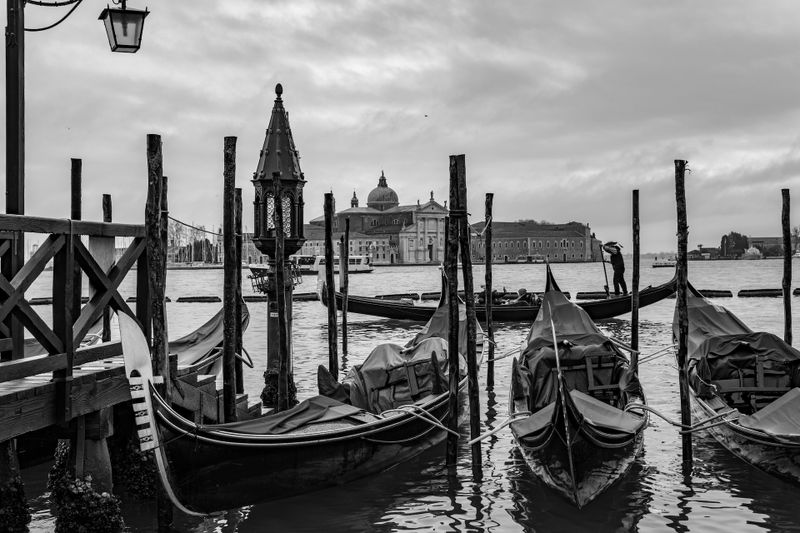2024 marks a significant year for art enthusiasts and historians alike, as it commemorates the 450th anniversary of Giorgio Vasari's death.
Vasari, a central figure of Mannerism, was not only a celebrated painter but also an accomplished architect and the author of Le Vite de' più eccellenti pittori, scultori, e architettori, the first modern work of art history.
Among the many events and exhibitions dedicated to Vasari this year, one of the most remarkable is the complete reconstruction of the ceiling painted by Vasari in Venice, specifically for Palazzo Corner Spinelli.
Ceiling Painted by Vasari in Venice: Rediscovering a lost masterpiece

After nearly five centuries, the Gallerie dell’Accademia in Venice have successfully reassembled the ceiling painted by Vasari. This project, which involved over 40 years of research and acquisitions, stands as a testament to the dedication of the Italian Ministry of Culture and Venetian institutions in preserving and restoring significant artworks.
The ceiling, originally created in 1542, was dismantled and scattered across various private collections by the late 18th century. However, thanks to the concerted efforts of the ministry and private donors, eight of the nine original panels have been reunited.
The Historical Journey of Vasari's Ceiling
The ceiling painted by Vasari in Venice was commissioned by Giovanni Corner, a member of one of Venice's most influential families, shortly after he acquired Palazzo Corner Spinelli on the Grand Canal.
Vasari's work for the so-called camera nova of the palace was a grand composition featuring nine compartments, including representations of the Virtues and Putti, covering a total area of 12 square meters. The central figure, Carità (Charity), was surrounded by allegories of Hope, Faith, Patience, and Justice.
However, during the mid-18th century, the ceiling was dismantled and the panels were moved to different locations. The subsequent fragmentation and dispersion of these artworks across Italy and beyond led to their near disappearance from public view.
Remarkably, the first piece to be recovered, Il Suicidio di Giuda (The Suicide of Judas), was reacquired by the Italian government in 1980 and is now housed at Casa Vasari in Arezzo.
A collaborative effort in preservation
The reconstruction of the ceiling painted by Vasari in Venice was made possible through a unique collaboration between the public and private sectors.
This partnership, driven by a campaign of research and fundraising, successfully raised nearly one million euros, enabling the acquisition and restoration of the scattered panels. The project not only highlights the importance of preserving cultural heritage but also serves as an exemplary model of cooperation between different institutions.
An immersive experience at the Gallerie dell’Accademia
The Gallerie dell’Accademia have dedicated an entire room to the ceiling painted by Vasari in Venice. The panels have been meticulously restored and are now displayed in an immersive environment that reconstructs the original setting of Palazzo Corner Spinelli.
Visitors are transported back to 1541, when Vasari first arrived in Venice and began his work on the ceiling. This exhibition allows the public to appreciate the full scale and significance of Vasari's composition, providing a deeper understanding of the artist's influence on later masters such as Tintoretto, Titian, and Veronese.
The rediscovery of Vasari's Extraordinary Ceiling: A cultural triumph
The ceiling painted by Vasari in Venice represents a monumental achievement in the realm of art restoration and cultural preservation.
Originally commissioned by Giovanni Corner for the grand halls of Palazzo Corner Spinelli along the Grand Canal, this extraordinary work was dismantled and dispersed across various private collections and institutions.
The Gallerie dell’Accademia have played a pivotal role in the acquisition and restoration of these invaluable panels, successfully reassembling the ceiling with the notable exception of the final missing panel.
The efforts to reunite the scattered tables and compartments have been supported by a collaborative venture between the Italian government and private donors through the Peril Fund. This initiative underscores the significance of preserving Venetian heritage and highlights the remarkable contribution of Giorgio Vasari to the world of art.
The completed display now includes all but one of the five main ones, which feature allegorical representations of Faith, Hope, Justice, and other Virtues, alongside charming putti.
The Pinacoteca di Brera and other institutions have also contributed to the project, reflecting Italy's commitment to safeguarding its artistic legacy.
The restored ceiling not only celebrates Vasari's artistic genius but also reaffirms the importance of cultural institutions in the preservation and presentation of historical paintings. The corner spinelli project is a testament to the dedication of both public and private sectors in ensuring that masterpieces like this are honored and enjoyed by future generations.
Ceiling Painted by Vasari in Venice
The ceiling painted by Vasari in Venice is more than just an artistic masterpiece; it is a symbol of the enduring legacy of one of the most influential figures in art history.
The successful reassembly and display of this work are not only a triumph of art conservation but also a fitting tribute to Vasari in this commemorative year.
As visitors to the Gallerie dell’Accademia gaze upon the reconstructed ceiling, they are reminded of the intricate interplay between history, art, and the dedicated efforts that ensure such treasures are preserved for future generations.

